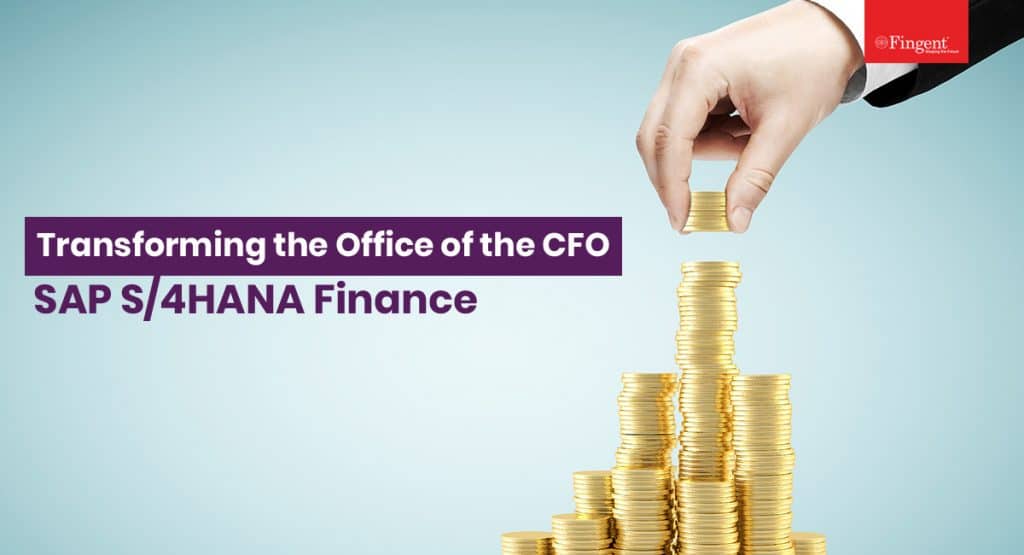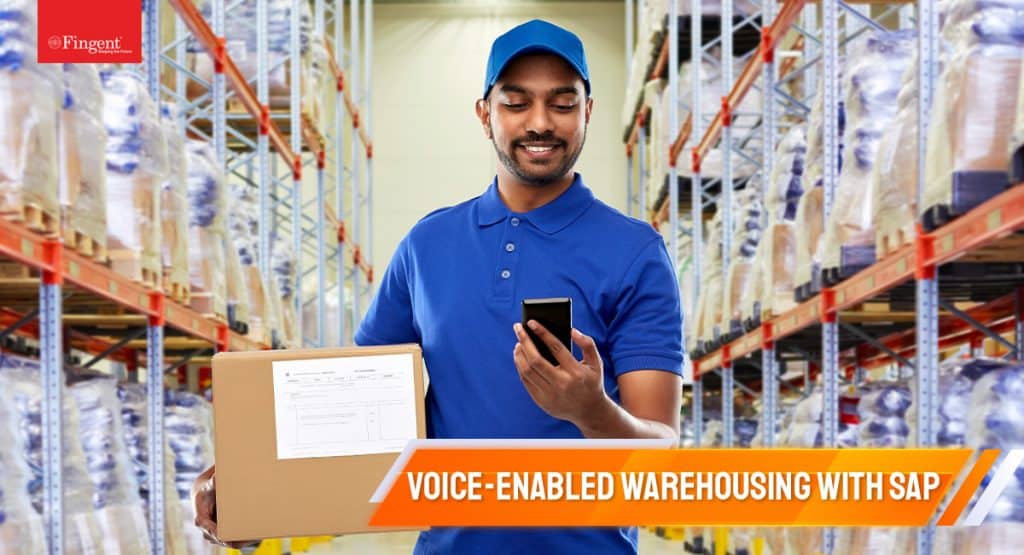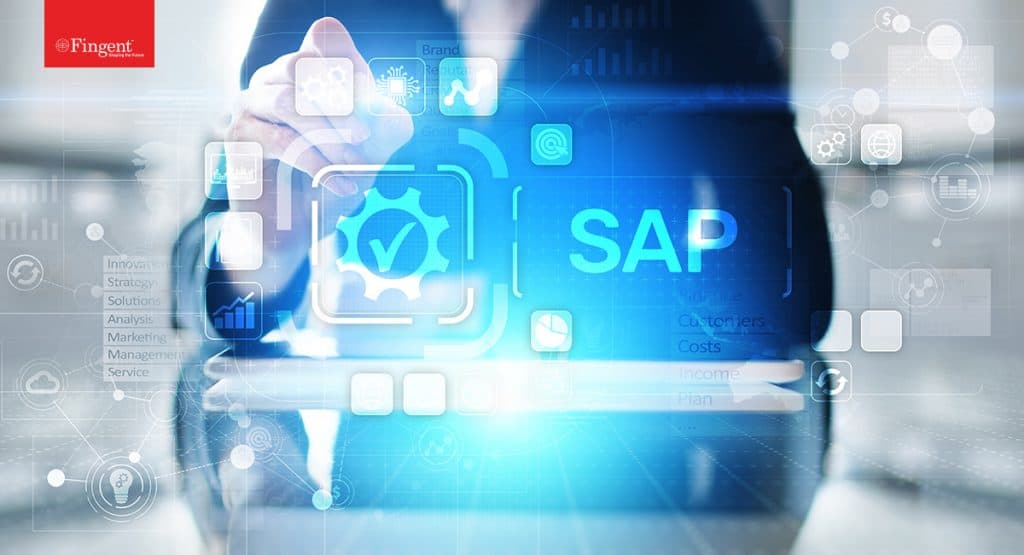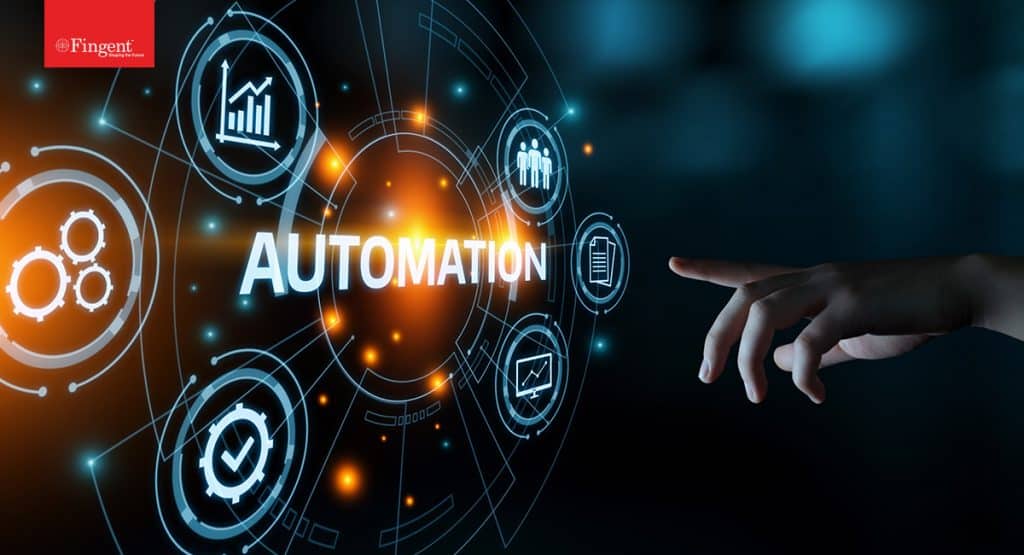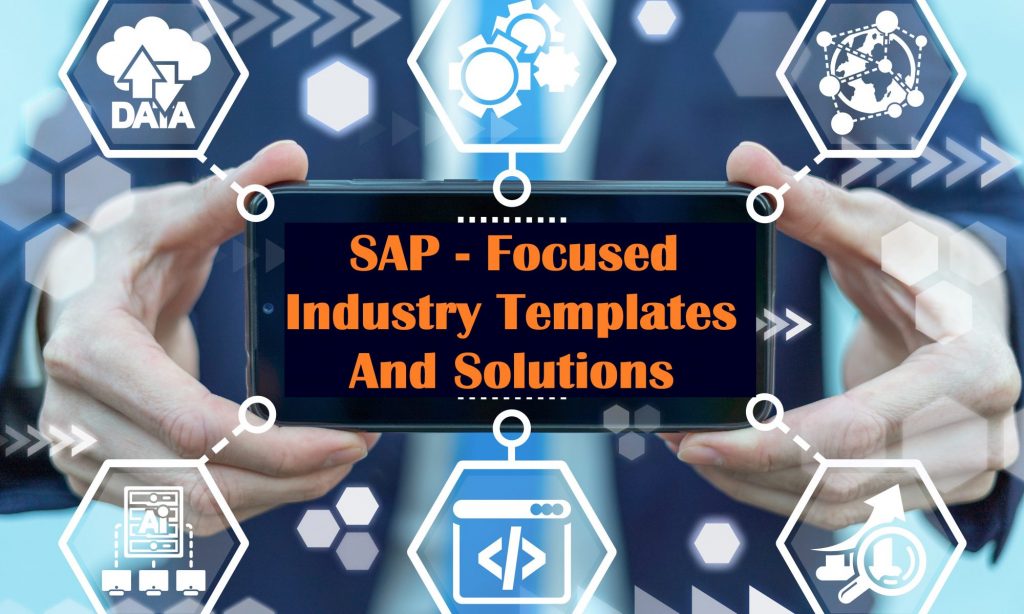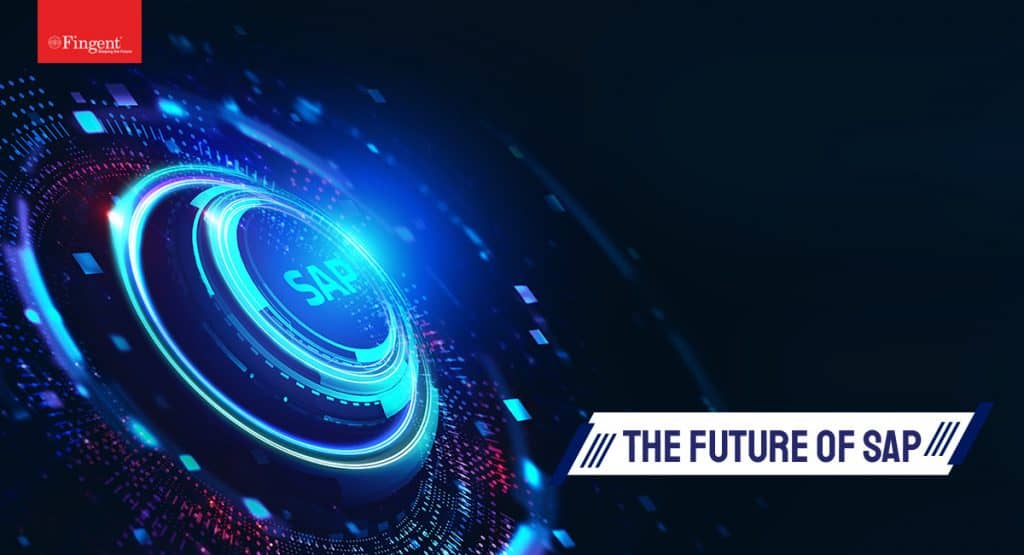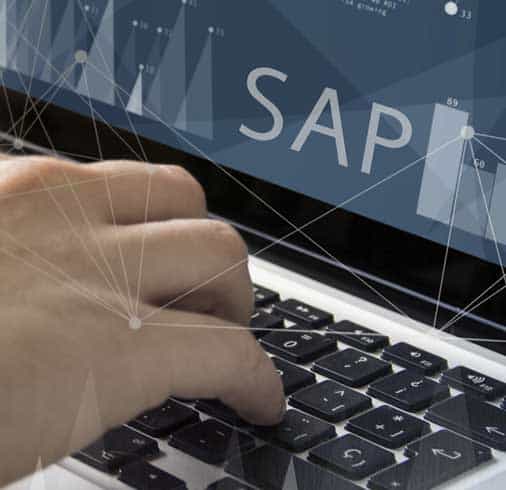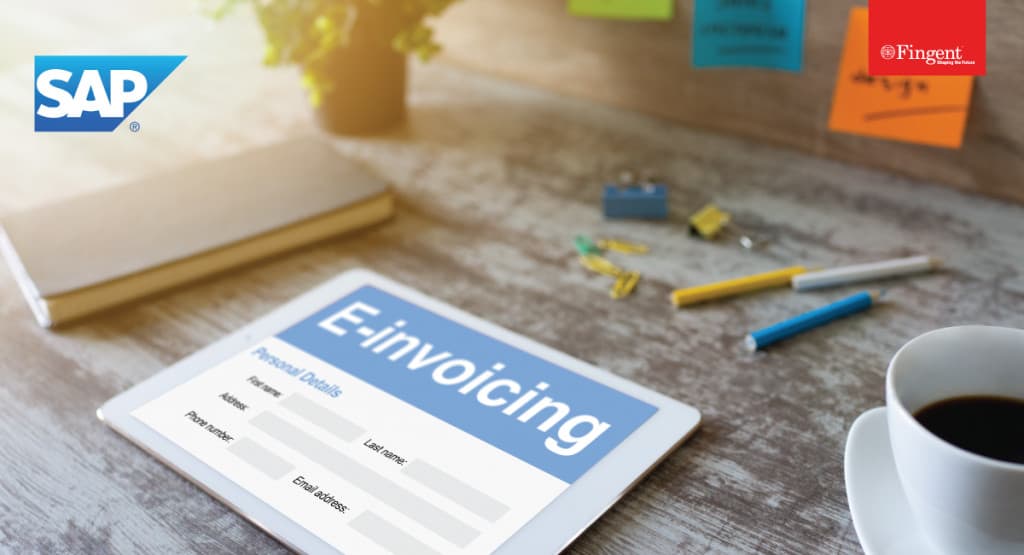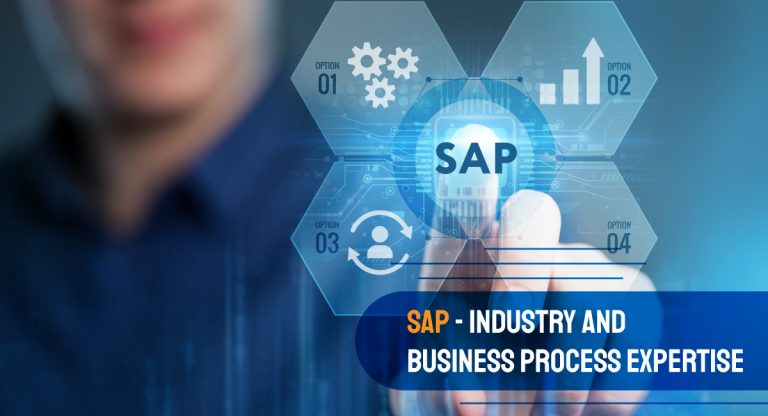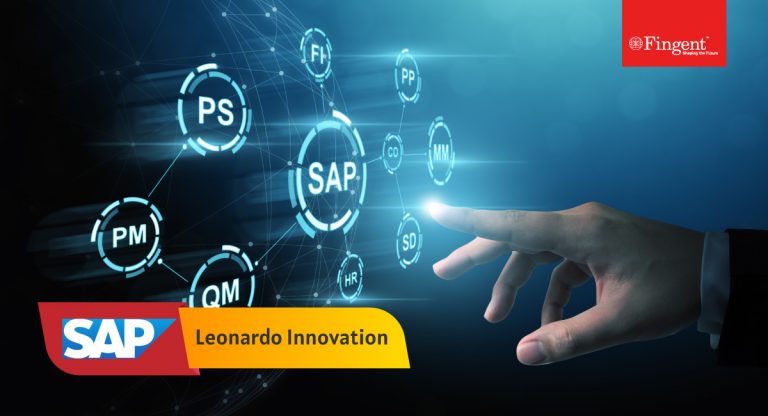Tag: SAP S/4HANA
The COVID-19 pandemic has hit retailers hard. Overnight, malls, boutiques, and shops teeming with customers were evacuated. As the days dragged by and shutters remained close, many retailers had to let go of employees and even shut their shops permanently. We will see how, but this blog aims to show that this does not need to be the case for your retail business. You can still stay afloat, beat the competition, and rise to success with a little help from SAP!
Changing market conditions show no mercy on retailers
With the pandemic raising its ugly head, 2020 seemed to paint a dismal picture for the future of retail. Major retailers have been canceling orders and delaying payments to their suppliers. This forced some brands to store their seasonal articles or move them into distribution centers or outlets. For some retailers, the coronavirus pandemic increased the risk of bankruptcy due to store closures, while others barely made it through.
For example, Rubana Huq, the president of BGMEA (Bangladesh Garment Manufacturers and Exporters Association), told the press that 3.18 billion orders were suspended. This had an impact on more than half of the 4 million garment workers in Bangladesh.
At the other end, brick-and-mortar presence is seeing a shift to the online commerce environment, which picked up at an exponential pace. E-commerce proved to be a pivotal moment for retailers, making it necessary for them to invest in digital capabilities. A critical aspect of staying competitive in such unprecedented times is the growth of technology and its importance in operational success.
Read more: How Fingent Helps CFOs Gain New Insights and Reliably Enable Key Decisions
Read on to find out how SAP plays a crucial role in turning things around for the retail industry.
SAP enables a differential strategy in the competitive market
More and more companies are recognizing the advantages of implementing SAP solutions. In the current recessionary and competitive market, delaying digital transition may prove a costly misstep that retail businesses will find hard to retrieve. Solutions offered by SAP can help retailers control various aspects of their business and identify trends in customer behavior and capitalize on opportunities at the right time.
With ever-changing customer behavior, SAP equips retailers to become customer-centric. It can help retailers analyze buying behavior by providing much-needed consumer insights. These insights will help them offer more personalized and delightful buying choices that attract customers and retain them.
Here is how SAP equips retailers:
- Provides real-time behavioral information, both online and in-store
- Reduces cycle time
- Helps retailers identify newer ways to find leads and build loyalty
- Streamlines operational process
Also, SAP solutions can help retailers offer a real-time personalized buying experience as it influences buyers’ behavior at the point of purchase. To create such a customized offering, retailers will need insight into buyers’ purchase history, profile, and shopping behavior. That’s where SAP solutions come to your rescue. SAP can provide retailers with all the information required to help them stay competitive.
SAP solutions help deal marketing and merchandise challenges
The retail industry can be volatile, especially during times like these. Retailers who manage seasonal merchandise might find it challenging to maintain multiple products and keep track of all that product data. Any incorrect data can prove costly for the organization. Such inaccurate data can also lead to a mismatch of data across all sales channels, presenting inconsistent product pricing and customers’ eventual loss.
Thankfully, SAP is the backbone for merchandise management, nullifying all these challenges. It comes with a simplified data model that offers end-to-end support for all retail functions. This concept works across the product lifecycle, from master data creation to stock management. It allows retailers to create and maintain the data effortlessly while ensuring pricing consistency across all the channels. These features can increase the organizations’ revenue, minimize data errors, enhance time to market, facilitate a better customer experience, and increase conversions.
Here is an example of how SAP solution helps:
Fewer markdowns: Retailers such as consumer electronics and fashion deal with seasonal goods. To stay competitive, retailers must ensure that these products are available in good time. SAP solutions offer more efficient season management and optimized ordering.
SAP solutions can help manage challenges in the supply chain
Inaccurate data can create challenges in planning, leading to longer response times and increasing the risk of losing the consumer to competitors. Fortunately, SAP solutions come with a single platform for all warehouse and transportation management. Features such as real-time analytics and advanced shipping capabilities can eliminate inventory challenges and enable live inventory management.
Thus, the supply chain process becomes agile and leads to higher revenue. It can also reduce the operating cost of the warehouse. By simplifying and automating processes, SAP can redefine retail and bring value to any retail business.
Read more: How SAP Helps Realize Voice-enabled Warehouse Operations
Following examples prove SAP helps with supply chain:
1. Fewer stock-outs
Supply chains are typically complex and need high levels of agility. SAP solution enables retailers to track procurement journeys automatically that helps reduce revenue loss due to the late arrival of seasonal goods.
2. Lower inventory costs
SAP can harmonize stock information and keep it up to date. At any given point, a retailer can intervene centrally and place a repeat order when necessary. This reduces inventory carrying costs and enables better inventory management which increases revenue.
3. Create seamless customer experiences
Retailers realize the significance of adopting sensor technology to create seamless and highly personalized business processes across all channels. SAP simplifies logistics and digital channel processes from order to payment, both in-store and online.
Key solutions from SAP for retailers
Here are some key solutions that SAP has made available, which can help your retail business:
1. SAP S/4HANA Retail solution for merchandise management
With the SAP S/4HANA retail solution for merchandise management, you can perform necessary checks on inventory, offers, availability across stores, and more in a single, unified view. It is instrumental in engaging your customers with cross-channel interactions.
Read more: SAP S/4HANA: Redefining End-To-End Solution
2. SAP Commerce Cloud
Through the SAP Commerce Cloud, retailers gain the ability to “launch new digital experiences with headless e-commerce capabilities.” SAP Commerce Cloud empowers your retail business with Web apps, chatbots, messengers, and other capabilities to enhance your customers’ digital experience, engagement, and conversions.
Read more: Why is SAP Commerce Cloud A Complete Digital Business Solution
3. SAP Ariba Strategic Sourcing
The SAP Ariba Strategic Sourcing Suite is “a single, closed-loop, source-to-contract solution bundle for managing sourcing and suppliers across all spend categories.” It helps retailers efficiently manage their direct materials sourcing without going through laborious and faulty manual processes.
Read more: SAP Ariba & SAP IBP Integration to enhance supply chain visibility in manufacturing
4. SAP Extended Warehouse Management
The SAP Extended Warehouse Management system is a brilliant solution to managing high-volume warehouse operations. It gives you complete visibility of your supply chain logistics, warehouse operations, and distribution process, giving you seamless control and maximizing the use of your resources.
5. SAP Business One for Retail
SAP Business One for Retail is a comprehensive digital solution that enables retailers to manage all their retail operations, including Point of Sale (POS) insights. It helps retailers with better inventory control, a streamlined ordering process, and seamless multi-channel e-commerce.
Read more: SAP Business One vs. SAP Business ByDesign: Helping Businesses Pick the Best
Empower your retail business with SAP
An industry capable of adapting to new and evolving trends will rapidly recover from the pandemic’s effect. SAP solutions can help retailers examine those trends in great detail. SAP is a powerful tool that allows you to gather all the essential data needed to improve your business. Powered by insights gathered with the help of SAP solutions, retailers can redefine loyalty programs and stay competitive in the current market space.
Fingent offers custom implementation and migration services to SAP and can help you move quickly and make the best use of this technology NOW when you need it the most. Leveraging SAP solutions with a Silver Partner of SAP will give your retail business an added advantage. Drop us a message, and let’s get you started.
Stay up to date on what's new

Featured Blogs
Stay up to date on
what's new



Talk To Our Experts
SAP Intelligent Robotic Process Automation accelerates your move towards Intelligent Enterprise. Redirect your resources to high-value functions with SAP IRPA.
Supercharge your business with SAP Intelligent RPA!
Is it a good time to look toward the future while the world is in the thick of the COVID-19 crisis?
Yes, it is!
Irrevocably, the pandemic has impacted business priorities in far-reaching ways. This global crisis has pushed businesses to pivot on a dime as they respond to changing factors such as customer needs, market, and new priorities. Even companies that were slow to adopt automation have begun leveraging powerhouse processes like Intelligent Robotic Process Automation (IRPA).
Read more: How Automation Ensures Businesses Stay Afloat During COVID-19 Crisis
Organizations are now using Intelligent RPA to provide faster service to customers, revamp operations for distributing work, and reduce costs during this economic turmoil. Most enterprises are embarking on their automation journey with SAP IRPA. This piece shortlists seven reasons how global IRPA from SAP can enhance business performance and productivity.
What is SAP IRPA?
The SAP IRPA suite is an end-to-end cloud solution of automation tools. The work on IRPA technology began in early 2018. Within two years, SAP managed to become a relevant global RPA player. SAP IRPA provides better integration into the SAP application stack. It uses intelligent bots to automate repetitive manual processes. What makes SAP Intelligent RPA is that it helps businesses stay relevant by providing insights that empower them to make the right decisions.
Read more: SAP Focused Industry Templates & Automation Solutions
7 ways SAP IRPA can enhance the performance and productivity of your business
1. Easy integration with SAP applications
Usually, employees will have to spend a lot of time moving from one application to another. This is where intelligent bots come in and address one of the biggest pain-points of employees. It allows them to execute processes over multiple systems, multiple software, and multiple cloud solutions. This way, employees enjoy the ease of data transfer while still accessing numerous applications quickly. Such easy integration improves speed and efficiency while reducing costs.
Read more: Top 3 UI Offerings from SAP: Fiori, Screen Personas, and Lumira
2. Purchase order follow-up
It is the responsibility of the company to follow-up on a purchase order. This may mean that the business will have to follow-up on numerous occasions, right from the issuance of the purchase order to receipt of goods. However, this does not mean that the process keeps changing with each purchase order. A single SAP report is not capable of addressing all these follow-ups. A user will have to rely on various reports.
SAP IRPA implementation enables a user to quickly generate daily reports on all open purchase orders. By implementing the SAP IRPA tool, a business could make its follow-up system much more efficient. It allows business users to pay attention only to a few cases while the rest could be handled by the SAP IRPA tool.
3. Supplier evaluation
Keeping track of suppliers’ information helps the purchasing department negotiate the best rates. It can also help ensure the timely delivery of material and services. A supplier evaluation could include parameters such as price and delivery of the materials or services, goods receipt, invoice verification, quality, and price changes.
The reports must be run to get the relevant data. Implementing SAP IRPA can help business users export the data to multiple Excel sheets, and run compares to create one report that can then be published weekly. This way, a business will have error-free, real-time data that helps them with the supplier selection process.
4. Workflow monitoring
In every business, transactions happen daily, and workflow failures are common. However, at a crucial time, workflow failures can affect crucial business processes. It would require a workflow support team to run data fixes and restart the workflow.
With SAP IRPA, you can quickly identify the issue and fix it. This process does not require a support ticket, and you can do it regularly. It takes the load off the workflow consultants as they need to be involved only for issues that require code changing.
5. Cost optimization
SAP IRPA can create cost savings by enabling 24/7/365 execution at a fraction of human equivalents’ cost. Using robotic technology proves to be cost-effective and helps businesses cut down operational costs.
The likelihood of human error is higher in routine manual tasks. SAP IRPA can help improve that while saving costs by eliminating the need to repeat a job. This translates into reducing costs incurred by human-error.
6. Maximize business process performance
Bots can learn patterns without explicit training. This capability helps in identifying structured and unstructured data and takes necessary actions automatically. These self-learning bots maximize business process performance.
SAP IRPA can deliver bots that provide human-like interactions with customers. By automating repetitive business processes that need human intervention, digital assistants improve user productivity and efficiency.
Read more: How Robotic Process Automation Is Revolutionizing Industries?
7. Interface monitoring
While interfaces help in numerous transactions, they also encounter many failures. Sadly, most users are unaware of an interface failure unless they identify a failed business transaction. This may force a business to depend on support teams to identify and fix the problem to ensure that the business transaction can be completed on time.
However, identifying the problem is a tedious and complicated task that takes a considerable amount of time. Typically, an organization starts monitoring its interface only when a business user realizes that his/her business transaction failed.
A better approach would be to implement SAP IRPA to program interface monitoring that can be done daily. This allows the support team to focus on solving issues before a support ticket is raised.
Why is it essential to choose SAP IRPA now?
Before COVID-19, RPA has played a vital role in delivering digital transformation, driving-up productivity, improving work capacity, and augmenting overall worker satisfaction. During the COVID-19 crisis, RPA enabled businesses to take urgent action to reduce the pandemic’s negative impacts. This allowed companies to turn resources around to ensure business continuity. Moving forward, SAP IRPA will facilitate business continuity and future growth of organizations as they emerge from the current economic downturn.
Read more: How SAP Supports Effective Business Continuity Planning
If you haven’t yet enabled SAP IRPA powerhouse, it’s high time you did! Give us a call and let us help you get on-board ASAP.
Stay up to date on what's new

Featured Blogs
Stay up to date on
what's new



Talk To Our Experts
Fiori vs. Screen Personas vs. Lumira: Which SAP UI platform best-fits your requirements?
User experience defines customer experience today. User expectations vary with individuals, previous experiences with software, or devices. People tend to leave a mobile app or a web application if they find it slow, inefficient, and difficult to use. Amazon’s open and highly navigable UI has made it a leader in e-commerce, with 29% of baby boomers and 21% of Generation X ranking its UX as the best a web or mobile app can offer. This example of Amazon tells us how vital UI is to create and deliver an unparalleled user experience.
Being a leader in enterprise applications, systems, and products, SAP has always developed user interfaces that its customers appreciate. Over these years, SAP has come up with replacements to its traditional SAP GUI, designed on platforms like NetWeaver. As the UI technologies mature, the tools used for design and development transform. This piece analyzes three of the most popular SAP UI offerings and their benefits: Fiori, Screen Personas, and Lumira.
Read more: How Fingent Enables e-Invoicing for SAP Users to Stay Compliant with GST India Regulations
1. SAP Fiori
Built on the latest design principles, Fiori is one of the most contemporary and enhanced user experience offerings. Fiori applications are device-independent, easy to use, and easily configurable across tablets, desktops, and smartphones. It simplifies workflow approvals, information lookups, and self-service tasks and brings excellent user experience to enterprise applications.
SAP Fiori enables multiple device applications through which a user can start a process on her laptop or desktop and continue it on a smartphone or tablet. For unmatched application response and query-execution time, SAP Fiori can be combined with SAP HANA. It’s easy to set up Fiori and configure a transaction application in systems that run on ECC 6 or EHP 7+ versions. Fiori aligns with SAP’s future UI/UX strategies by offering a modern and delightful user experience.
Benefits of Fiori
- In addition to increased productivity, research reveals that Fiori delivers a 64% reduction in time needed to complete a task than SAP GUI.
- Fiori is simple and easy to learn, so it has a better adoption rate and cuts training time.
- Fiori offers more intuitive workflows that feature business logic instead of SAP logic. So employees tend to get less frustrated.
- Users without SAP expertise find Fiori easier to use.
- Unlike the mouse-keyboard structure of SAP GUI, field technicians and employees can use Fiori-based applications on different device types.
- Developers find less need to build their tools on SAP HANA.
Read more: What is Business Process Expertise in SAP and Why You Need it
2. Screen Personas
Screen Personas is a UI framework or a tool that enables modifications to the existing SAP GUI by allowing you to add or remove fields your users don’t need, collect data automatically using the scripting engine and bring scattered data to a single screen using the editor. Screen Personas is ideal for automating and streamlining business processes and simplifies transactions to create the Fiori user experience across all the devices. This UI offering is included in the standard SAP ERP license.
One of the significant drawbacks of Screen Personas is that it remains limited to the current transaction screens. While it is possible to combine transactions or load extra information via Bapi’s, there could compromise the performance. We can use Screen Personas on different devices, so it becomes necessary to build a separate ‘flavor’ for each screen size, which means extra development time is needed. Further, there are offline options for Screen Personas.
Benefits of Screen Personas
- It reduces the number of clicks by simplifying SAP GUI transactions, simplifies user interfaces, and improves user productivity and data quality.
- Allows users to access data and fill-out data on their mobile devices, making working on the go a breeze. Screen Personas has improved the work experience on the go and in dynamic work environments like the factory floor.
- Screen Personas can be leveraged to bring SAP Fiori experience to transactions and SAP S/4 HANA.
- Reduces the cost involved in training the employees.
- Boosts your company’s image and branding.
3. Lumira
Also known as a visual intelligence tool, SAP Lumira helps create stories and visualize them on a dataset. You can enter the data in Lumira as data sets and then apply filters, calculated columns, and hierarchies to build documents on Lumira. To visualize the data effectively, you can choose different charts such as pie charts, bar charts, etc. The tool is simple and has a user-friendly interface that allows you to create captivating visualizations and analyze data without scripting.
Benefits of Lumira
- From fact-based solutions to complex business questions, Lumira improves decision-making by avoiding list tables and fixed format reports.
- Integrates wide-scale insights that include minute details, which helps maximize business knowledge.
- Increases self-service data usage without burdening the IT department
- Visualize vast quantities of data in real-time using SAP HANA and deploy the same to mobile devices.
SAP Lumira Standard Edition is a paid version and SAP Lumira Personal Edition is available for free download.
UI focused on design thinking
SAP technologies are focused on design thinking and define methodologies to address business challenges. Design thinking provides creative ideas and solutions to resolve complex use cases.
Intelligent technologies from SAP, such as Leonardo, IRPA, Edge Services, IoT, etc., are designed to be integrated with any of your existing SAP ERP systems like ECC or S/4HANA. For instance, you can use IoT services to create Fiori apps in the SAP Cloud Platform. When integrated into your business processes, you will not know there is machine learning involved as an end-user, and you won’t see any apparent changes. However, you will experience automatic decision-making or recommendations.
Read more: Unlock the Potential of Intelligent Enterprise with SAP Leonardo
There is no denying that SAP technologies and tools are evolving to offer an enriching user experience. Its unique UI offerings like Fiori, Screen Personas, and Lumira are designed to address customer priorities, UI expectations, and investment. Are you looking to create a successful UI strategy for your organization? Fingent helps you make the best of SAP’s UI platforms. Contact our expert today and discuss your requirements.
Stay up to date on what's new

Featured Blogs
Stay up to date on
what's new



Talk To Our Experts
Fingent Helps Ensure Hassle-free Filing of B2B e-Invoices for SAP Users in India
e-Invoicing is fast becoming the norm rather than the exception across industries and is being deemed mandatory by many governments as well. The Government of India has announced that starting from 1st October 2020, e-Invoicing will be mandatory for enterprises with a turnover of ₹500 crores while they submit their B2B invoices to the IRP and GST portal.
Invoices that do not comply with the set requirements will be considered null and void. All registered businesses under the notified class of taxpayers with an aggregate turnover of ₹500 crores and above must get ready and take advantage of solutions that facilitate the automatic issuance and receipt of electronic invoicing.
In today’s fast-changing world, enterprises are under increasing pressure to adapt and perform. One way to deal with this challenge is to simplify processes for both buyers and suppliers. e-Invoicing is an excellent step in that direction. By making the transition from physical to digital invoicing, many companies are reaping the benefits of a more reliable, traceable, secure, and streamlined process. Fingent helps you accomplish the change in the simplest way.
This article covers how SAP provides an automated solution for your business and how easy it is to file e-Invoices through your SAP ERP system.
Without further ado, let us get into the details of e-Invoicing for B2B businesses.
What is the difference between a digital invoice and an e-Invoice?
Is there really a difference? Yes, there is! A digital invoice is either a Word or a PDF file of a paper invoice that is scanned. An e-Invoice on the other hand, is a data file that is transferred between computers. It contains structured data making it easier for a computer to comprehend and book automatically.
Why switch to e-Invoicing?
IRN has become mandatory on invoices and it is a requirement to avail the credit. False filing of credit with fake invoices has caused a considerable loss of revenue for the government. The e-Invoice system can provide a better taxpayer service resulting in an enormous reduction in evasion. e-Invoicing can also enhance the efficiency of tax administration by setting up enterprises on paper to generate invoices.
An e-Invoice helps you detect and avoid false claims made through fake invoices. It restricts tampering with invoice value and other details. It can also simplify GST reporting.
Here are some benefits of e-Invoicing:
- Convenient: Processing is digital and automated
- Fast: No waiting time for the paper to move from one desk to another
- Accurate: Minimized human error
- Cost-effective: Printing and postage cost is eliminated
Read more: Recession-proof Your Business with Digital Alternatives, Go Paperless!
What is involved in e-Invoicing?
Having seen the benefits of e-Invoicing, let us get into the nitty gritty of e-Invoicing. Electronic invoicing or e-Invoicing is a system that is used to generate and authenticate an electronic document containing transaction information between the seller and the buyer. It is automatically sent over the internet and can be easily integrated into a customer SAP ERP or third-party system.
The IRP (Invoice Registration Portal) gives an identification number to these e-Invoices. The IRN (Invoice Reference Number) generated by IRP will then be used to transfer all the information to the e-Way bill portal and the GST portal. This system reduces human efforts and a lot of paperwork. These e-Invoices are specially simplified with web apps while still allowing for SAP systems to process them easily.
The documents that are valid for e-Invoicing are invoices by a supplier, credit notes by a supplier, debit notes by a recipient. In the SAP system it is extremely easy to determine if the customer is eligible for e-Invoicing. Currently, the SAP solution is valid for B2B customers. If a customer has a registered GSTIN (goods and services tax identification number), the standard SAP solution determines if the customer is eligible for e-Invoicing or not.
How to generate an e-Invoice under GST?
Here is a look at the steps involved in generating e-Invoices:
- e-Invoices must be generated in the standard format prescribed by the GST network.
- After generating the e-Invoice, it will be updated on the IRP and sent through an asynchronous call.
- The IRP will then assign an IRN to the e-Invoice and digitally sign it.
- Then, IRP will generate a unique QR code that contains vital information on the invoice.
- Lastly, the e-Invoice is emailed to the recipient of the document.
The e-Invoice process and its advantages
The e-Invoice system aims to avoid data mismatch errors by addressing various challenges and enabling better data reconciliation. The generation process allows for interoperability, thus minimizing data entry error. It allows you to track the e-Invoices prepared by suppliers in real-time. As the relevant data of the invoices are auto populated when filing different returns, it makes the tax return filing process much simpler and easier.
How SAP rose to the occasion
With most aspects of the business being digitized, the government process is not far behind. This approach towards digitization by the government has generated a need for electronic tax compliance. The e-Invoice system with regulatory obligations has become mandatory for businesses in most countries, including India. In order to cater to the need for a country-specific legal requirement integration, SAP developed its own SAP document compliance solution for S/4 HANA systems and SAP ECC for India users.
Benefits of navigating e-Invoicing through SAP document compliance
- A Global platform: SAP e-documentation is a globally used platform to generate e-Invoices and real-time reporting.
- Live status update: It offers a live status update for each e-Invoice.
- Health check: By validating transaction data, it ensures an error-free payload to the IRN and NIC portal.
- Three solutions in one platform: It consists of e-Way bill, e-Invoice, and SAP digital compliance service of India.
SAP document compliance can offer businesses real-time generation of e-Invoices, auto-generate part-A of the e-Way bill while creating an e-Invoice, smoothen reconciliation between the e-Way bill and IRN and make cancellation of IRN possible.
How Fingent can help you stay compliant with GST India e-Invoicing
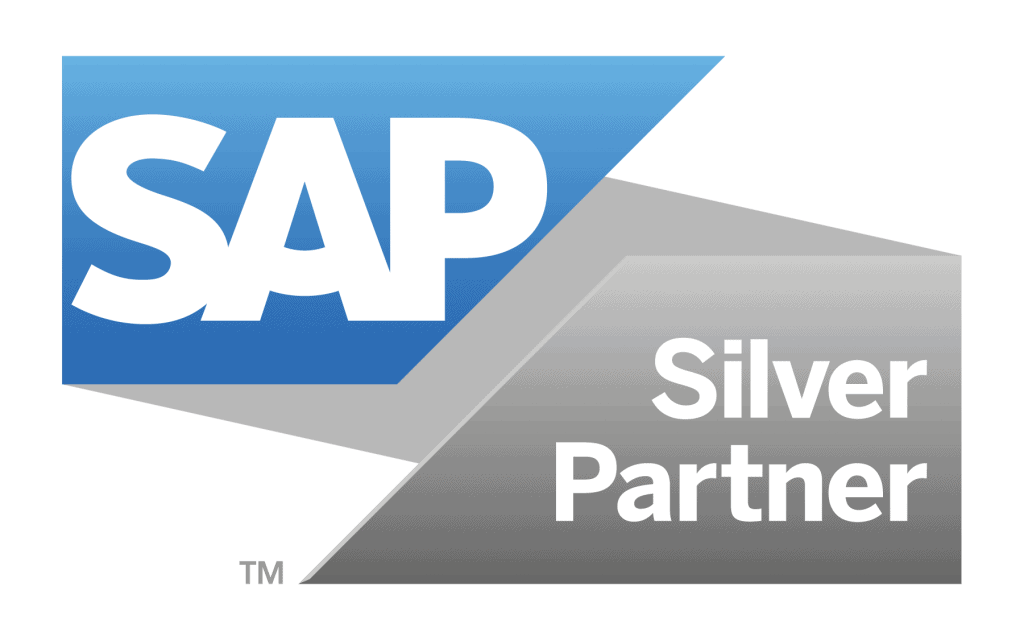
Being a Silver Partner of SAP, Fingent offers e-Invoicing integration for SAP ERP users in India. We provide:
- API integration to authenticate, generate, cancel, print, and track e-invoice as per the prescribed format
- Follow SAP billing transactions to generate e-invoices directly
- MIS Reporting, Reconciliation, Status, Alerts, and Dashboards
- Extensive configuration options and easy-to-manage customizations
- No conflict with any of the existing SAP functionalities
- SLA-driven support under AMC
- On-demand support to handle any statutory changes made by the Govt.
Read our case study: Automated Integration between SAP SuccessFactors-Employee Central and SAP S/4HANA– How Fingent helped the customer gain real-time insights for improved decision-making
The right implementation of e-Invoicing has the potential to transform the transactional landscape of the Indian commercial economy into a transparent digital system. It is an opportunity to create an automated e-trail and the SAP solution is designed to help you make this smoother and keep a tight control over legal requirements and compliances.
Future-proof your business by giving it the edge it needs with our customized SAP solutions, which will help you with your e-Invoicing as well as offer you a host of other competitive advantages. We at Fingent are experts at creating intelligent business solutions with SAP. Give us a call and let us get you started.
Stay up to date on what's new

Featured Blogs
Stay up to date on
what's new



Talk To Our Experts
How SAP Solutions Help with Business Continuity Challenges
Every organization needs a business continuity plan to carry out its critical business as usual, especially when the area where it operates is affected by a crisis like COVID-19. That’s where enterprise resource and business planning suites like SAP comes to your rescue. SAP solutions are designed to help you meet your business continuity goals and ensure that your establishment survives and recovers from a disaster efficiently.
“SAP Help Portal describes business continuity as the efforts to ensure that critical business functions will be continuously available for clients, customers, suppliers, and other entities.”
Business continuity planning, however, is not free of challenges. Varying business requirements can shoot up your investment costs. Consider scenarios such as the installation and maintenance of hardware, software, and data center infrastructure. A simple and cost-effective way to address these requirements will be to use efficient cloud computing solutions instead of massive physical servers. This is where SAP solutions can come handy. SAP Cloud Platform, SAP S/4HANA, SAP Cloud Analytics, SAP Leonardo, SAP Cloud Platform Internet of Things, etc. are only a few of the key services offered by SAP.
How SAP Solutions Help with Business Continuity Challenges
SAP is an efficient technological framework that can be easily incorporated into your existing business structure to maximize the productivity of your business functions. This helps boost the overall growth of your establishment.
SAP offers impressive ways to manage your clients, customers, and business interactions. With the right SAP solutions, you can fast-track and automate your routine processes and dedicate your skilled workforce to attend the core functions. Minimal workforce retention and lower equipment maintenance costs are two of the key benefits of deploying SAP into your business.
Related Reading: What is Business Process Expertise in SAP and Why You Need it
You will gain a high degree of flexibility by integrating SAP in your business structure. This way, you can adjust to the existing as well as imminent changes in the industry smoothly. That helps your establishment to adapt and evolve as per the varying market trends. By storing massive amounts of data on the cloud, you can also significantly reduce the operational and management costs of your business.
Business continuity plans can be very complicated to employ and execute. Traditional ways of managing the recovery infrastructure and testing the solutions can be very challenging and time-consuming. With reliable SAP solutions, all that can be managed flawlessly.
Below are some examples of how SAP solutions can help to solve different business continuity challenges.
Identifying Alternative Sources of Supply
Maintaining the supply chain is one of the most critical aspects to ensure efficient business continuity. Using SAP Ariba allows you to create smart connections with your suppliers so that you can communicate and collaborate with them adequately. The spend management solutions of SAP Ariba also ensure that your business is responsive and responsible, no matter what the crisis is.
SAP Ariba solutions help simplify the procurement and supply chain processes. It enables you to find new sources of supply for better management of your resources in the event of a disaster. At the same time, you can find profitable customers too, and scale your client relationships for superior sales cycles and cash control.
Financial Modeling and Managing Cash Flow
Financial modeling is key to make certain that your business continuity plans are authoritative and adequate. With the help of SAP S/4HANA Finance solution, you can easily manage your financial planning and accounting jobs. The ERP system also allows you to use real-time operational data and end-to-end planning for avoiding redundancy and time lags.
SAP S/4HANA Finance solution also supports accounts payable and receivable, so that you can keep an eye on the cash flow as well as create ad hoc simulations to see new business models or organizational changes. The treasury and financial risk management solutions of the ERP system allow you to integrate cash flow analysis and business planning, including the liquidity planning lifecycle. This is highly beneficial for effective accounts management.
Related Reading: SAP S/4HANA: Redefining End-to-End Solution
Employee Training and Certifications
Staff involvement is another vital element of a successful business continuity plan. However, holding a meeting to train and educate your staff members on the essentials of the business continuity and disaster management plans may not be possible always. This is where SAP SuccessFactors Learning Management System (LMS) emerges as a productive alternative. The online learning solution can simplify the process and adequately instruct your employees about the business continuity plan.
SAP SuccessFactors LMS can make sure that everyone is on the same page through proper training and emphasis on critical business functions. You can create easy-to-understand content for your employees and incorporate personalized and innovative elements to help them get a clear idea of the business continuity plan. You can also manage certifications and documents easily using the LMS software.
Download Our Case Study: Check out how Fingent automated integration between SAP SuccessFactors and SAP S/4HANA.
With a robust business continuity plan laid out using the right SAP solutions, you can have all the critical business data secured and accessible. This helps you recover from the disaster quickly and manage important business functions without affecting your customers or business reputation.
Fingent helps enterprises to frame robust business continuity plans leveraging SAP, S/4, and intelligent enterprise platforms. Our team includes members who are part of SAP’s core engineering team, who can provide consulting, advisory, implementation, integration, support, and monitoring services to ensure business continuity. Get in touch with us to learn more about our services.
Stay up to date on what's new

Featured Blogs
Stay up to date on
what's new



Talk To Our Experts
Today’s organizations require flexible ERP solutions for capturing new growth opportunities and embracing new business processes and models that allow them to reap the benefits of digital transformation. Faster adoption of intelligent technologies has become the new norm as organizations have increasingly started to look at their business from an integrated “end-to-end” perspective.
The end-to-end implementation helps ensure efficiency in terms of cost, performance, compliance, and insights through which process owners can improve the quality of service and speed up the execution time. Companies can become more agile, make faster acquisitions, meet high-level business objectives, and streamline processes by implementing the end-to-end process. It enables businesses to visualize duplicate efforts and eliminate them quickly.
Related Reading: Unlock the Potential of Intelligent Enterprise with SAP Leonardo
This article discusses how SAP S/4HANA can transform your end-to-end business process for enhanced efficiency.
What is an end-to-end business process?
An end-to-end business process is a process that is capable of addressing all your business requirements and processes in one centralized hub. It is a complete process cycle including all its various phases like project kick-off meeting, gap analysis, blueprint, realization, finalization, go-live, and after support.
In simple terms, the end-to-end business process starts with a customer’s request and ends with the successful fulfillment of that request. For businesses such as trading or manufacturing, end-to-end software has tools that can manage eCommerce, process orders, control stock, and manage warehouse and accounts.
It provides businesses with all the necessary components while managing the installation, integration, and maintenance of the process. The end-to-end process ensures that a business enterprise gets everything they need to function effectively. It can help minimize software costs as well as operational costs.
How S/4HANA transforms the end-to-end business process?
Since its launch in February 2017, SAP S/4HANA has been used extensively to provide “next-generation intelligent ERP”, enabling businesses to achieve digital transformation. With its three pillars, digital assistant, machine learning, and predictive analytics, S/4 is all set to transform the end-to-end business process.
Here are some ways how S/4 can transform end-to-end business processes:
1. Automation with intelligence
The ever-changing business infrastructure requires integrated, mission-critical, end-to-end processes. The intelligent ERP in the S/4 cloud caters to that very need. By further automating the process, it allows businesses to become more intelligent and agile. S/4 end-to-end processes are designed to work without interruption, thus improving agility. Since the cloud uses real-time embedded analytics, the processes function intelligently and automatically with nominal user input.
2. A game-changer
As the next-generation business suite, S/4 is designed to redefine how enterprise software creates value across industries with real-time insight. It also personalizes the user experience regardless of the device in use and eliminates batch processing by running end-to-end business processes at unprecedented speeds. The icing on the cake is that it can connect to IoT, Big Data, business, and social networks in real-time to create endless possibilities.
3. S/4 enables digitization
SAP S/4HANA is a business suite designed to help enterprises run uncomplicated end-to-end processes in today’s digital and networked world. Since S/4 can be deployed in the cloud or on-premise, it can drive instant value across lines of business with ultimate simplicity. It provides a guided configuration with the goals and value-realization plans for digitization activities that are part of the end-to-end implementation.
Related Reading: Create Intelligent Organizations with SAP Model Company
4. One system
With S/4 in place, employees do not have to spend time learning multiple systems. This ensures that the end-to-end process can be up and running as soon as possible. It minimizes disruption and results in a faster return.
5. Competitive edge
The source-to-pay solution is a decisive end-to-end process, which can improve the performance of an organization. This strategy covers the entire process starting from spend management through to accounts payable. By integrating SAP S/4HANA into source-to-pay, businesses can make better-informed decisions that translate into positive business impact and greater efficiency and productivity. Thus, streamlined source-to-pay processes give a competitive edge to businesses by helping them make intelligent procurement decisions.
Transform your business with S/4 for enhanced efficiency
Managing the end-to-end process can be challenging, but SAP S/4HANA can help businesses to stay ahead of the game by helping their customers to gain the most value through such interconnected processes.
By implementing S/4, businesses can experience greater automation to drive accuracy, efficiency, and better streamlined end-to-end processes. It can not only reduce time spent and risk of human errors but can also enhance data security. SAP S/4HANA can integrate strategy, process, procedures and policies, people, and technology into one cohesive effort ensuring that the organization is process-driven.
As discussed earlier, SAP S/4HANA is key to integrating end-to-end solutions into your business. To find tips on how you can seamlessly transition to SAP S/4HANA, click here.
If you are ready to get your business on to this revolutionary business suite, get in touch with us.
Stay up to date on what's new

Featured Blogs
Stay up to date on
what's new



